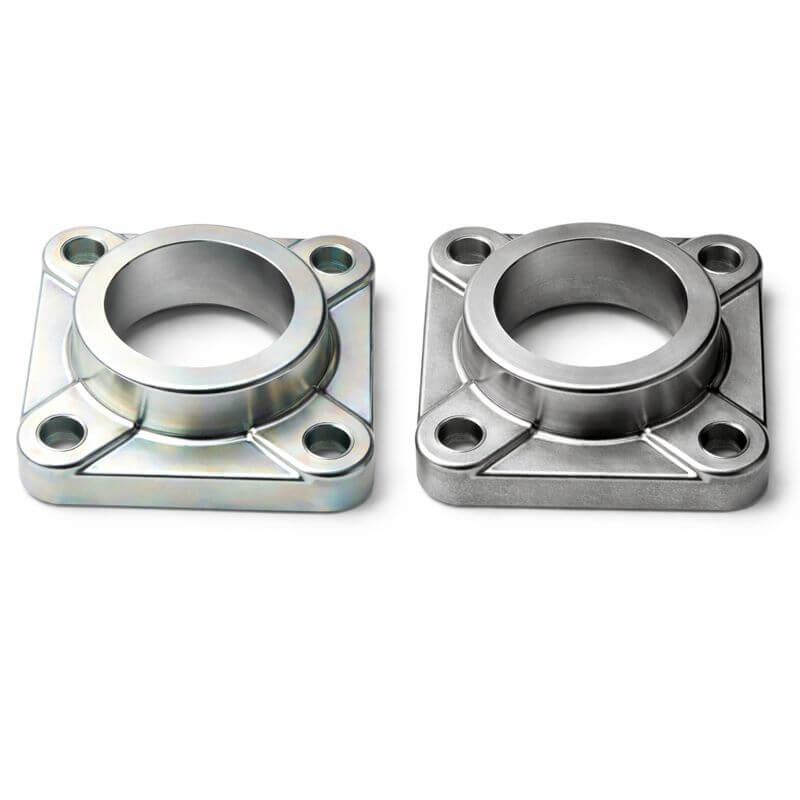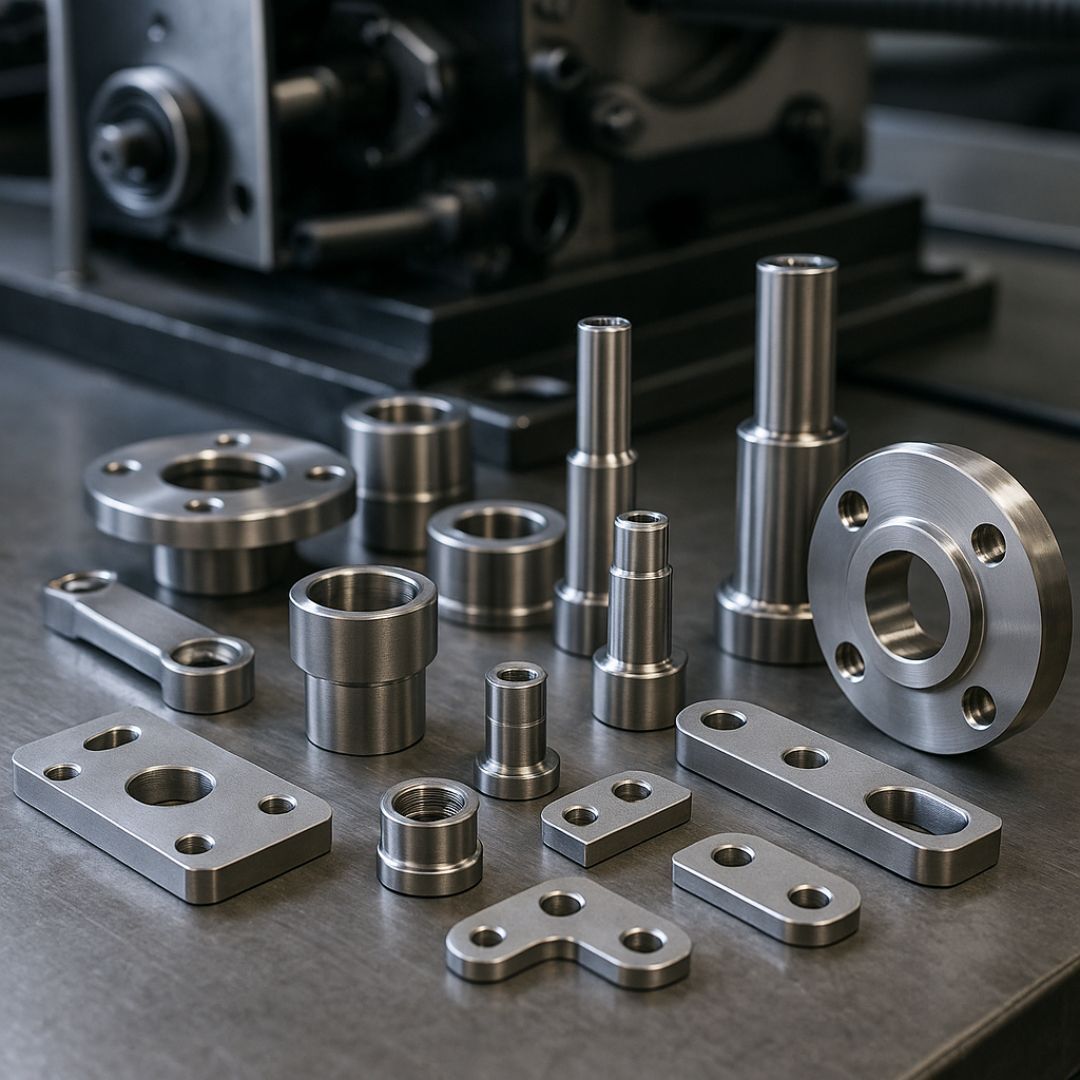3 min read
Galvanisation: Types of Zinc Coating, Benefits and Differences
Galvanisation is one of the most effective and widely used surface treatments for protecting steel and other metals from corrosion, oxidation and...
4 min read
![]() Weerg staff
:
May 15, 2025
Weerg staff
:
May 15, 2025

In advanced mechanical design, material selection plays a central role in determining the performance, reliability and durability of components. In industrial areas where traditional polymers are inadequate, materials such as PEI (polyetherimide) and PEEK (polyether ether ketone) are benchmark solutions for extreme applications. ULTEM™, the trade name for PEI produced by SABIC, and PEEK fall into the narrow category of high-performance engineering polymers. Both find use in aerospace, medical, energy, automotive and critical industrial technologies. However, their substantial structural and functional differences require a selective choice, guided by precise technical and design criteria.
 Chemically and structurally, PEI and PEEK belong to two different families.ULTEM is an amorphous polymer, meaning that it lacks a defined crystalline structure. This gives the material an isotropic behavior and, as with any amorphous material, it is characterized by a glass transition temperature, located around 215-217 °C. When this threshold is exceeded, the material does not melt but plasticizes, becoming less viscous as the temperature increases, losing structural rigidity. PEEK, on the other hand, is a semi-crystalline polymer with a percentage of crystallinity that can exceed 30-35%. This in addition to exhibiting a glass transition at about 143 °C, it also exhibits crystalline melting at 343 °C. This morphology allows PEEK to maintain high mechanical properties even above 250 °C continuously, due to the stability of the crystalline phases counteracting viscous failure.
Chemically and structurally, PEI and PEEK belong to two different families.ULTEM is an amorphous polymer, meaning that it lacks a defined crystalline structure. This gives the material an isotropic behavior and, as with any amorphous material, it is characterized by a glass transition temperature, located around 215-217 °C. When this threshold is exceeded, the material does not melt but plasticizes, becoming less viscous as the temperature increases, losing structural rigidity. PEEK, on the other hand, is a semi-crystalline polymer with a percentage of crystallinity that can exceed 30-35%. This in addition to exhibiting a glass transition at about 143 °C, it also exhibits crystalline melting at 343 °C. This morphology allows PEEK to maintain high mechanical properties even above 250 °C continuously, due to the stability of the crystalline phases counteracting viscous failure.
This morphological distinction is directly reflected in the operational thermal behavior. ULTEM can be safely used in continuous operation up to about 170 °C, with transient peak tolerance up to 200-210 °C. PEEK, on the other hand, is qualified for stable thermal conditions up to 250 °C, with preserved mechanical strength up to thresholds near 300 °C, making it suitable for environments such as oil down-hole, combustion chambers or braking devices in motorsport. In the design environment, when the temperature stably exceeds 180 °C, PEEK becomes the only effective polymeric option.
Mechanically, both materials exhibit high static properties. ULTEM has a tensile elastic modulus of about 2.5 GPa and a nominal tensile strength of about 95 MPa in standard unfilled grades. The material shows good ductility and creep resistance under constant load, especially in dry environment. PEEK has a higher elastic modulus, with tensile values around 100 MPa, it exhibits superior overall toughness, higher fatigue strength, and, most importantly, significantly better wear and abrasion resistance. These properties make it preferable in the manufacture of components subjected to dynamic load cycles, sliding contact or in high-temperature lubricated environments. It is for this reason that bushings, bearings, valves and high-speed gears are frequently made of PEEK or its reinforced derivatives.
Chemically, PEEK represents one of the polymeric materials with the highest resistance to aggressive agents. It can tolerate prolonged exposure to strong acids, concentrated bases, aromatic solvents and organic fluids at high temperatures. The highly stable structure, combined with low polarity and crystallinity, ensures nearly inert behavior, making it suitable for corrosive environments such as chemical plants, laboratory equipment or components exposed to oxidizing agents. PEI, while showing good resistance to fuels, oils, alcohols, and dilute acids, is more vulnerable to substances such as ketones and chlorinated solvents, where stress cracking may occur, especially in the presence of residual stresses.
 Analysis of dimensional stability and long-term behavior under static loading (creep) highlights a competitive advantage for PEEK, especially above 150 °C. Experimental data show that the retention of modulus and geometry under static stress is significantly superior for the semi-crystalline material, especially if the component is working in an unstable thermal environment or subject to frequent on-off cycling. ULTEM, being amorphous, is less prone to differential shrinkage and has better post-molding shrinkage uniformity, but its stability under prolonged thermal loading is more limited.
Analysis of dimensional stability and long-term behavior under static loading (creep) highlights a competitive advantage for PEEK, especially above 150 °C. Experimental data show that the retention of modulus and geometry under static stress is significantly superior for the semi-crystalline material, especially if the component is working in an unstable thermal environment or subject to frequent on-off cycling. ULTEM, being amorphous, is less prone to differential shrinkage and has better post-molding shrinkage uniformity, but its stability under prolonged thermal loading is more limited.
One area in which ULTEM excels and which often justifies its choice is electrical insulation. The material has one of the highest dielectric strengths among thermoplastics, exceeding 800 V/mil in standard configurations. In addition, its high surface resistance, combined with a very high oxygen index, makes it naturally flame retardant and self-extinguishing even in the absence of additives, a very important parameter when considering its application in the electrical field. It is UL 94 V-0 certified and in some versions reaches 5VA rating. PEEK is also self-extinguishing, but has lower dielectric properties and more sensitive behavior to moisture and temperature for applications in high electric field environments.
From a manufacturing point of view, PEI is easier to process . It requires process temperatures between 350 and 400 °C and can be molded with standard equipment, provided it is equipped with high-temperature heating elements and heated chambers. PEEK, in contrast, imposes more critical operating conditions. The high melting temperature requires hot zones up to 400 °C, and crystallization management during cooling must be extremely precise to avoid internal stresses and property degradation.
In the field of additive manufacturing, PEI has gained a central role, thanks to filaments such as ULTEM 9085 and ULTEM 1010, which are compatible with high-performance FDM printers equipped with a hot chamber. Thermal requirements are high, but manageable: hotend at 350-360°C and chamber at about 100°C. The printed components are robust, lightweight, and FAR25.853 and OSU 55/55 certifiable for aerospace use. PEEK is also moldable, but only with highly specialized machines that can handle temperatures above 400 °C and a thorough post-crystallization cycle, often in an oven, properly impart the semicrystalline structure to the material and ensure the stated mechanical properties. This limits its use to the most organized facilities and advanced industrial printing centers.
Finally, the economic aspect is a significant discriminator. ULTEM has an average cost of between €30 and €50/kg for standard grades, with a significant increase for aerospace-certified filaments. PEEK starts from a base of about 90-100 €/kg and can exceed 400 €/kg in medical or high-performance fiber-reinforced grades. This difference makes cost-benefit assessment critical in selection. Using PEEK in a context where its properties are not essential results in unwarranted overdesign, directly impacting the cost of production.
| Sector | ULTEM (PEI) | PEEK |
| Aerospace | Electrical ducts, air ducts, lightweight 150 °C brackets. | Structural components in engine area, bushings, hot cabin brackets |
| Medical | Resterilizable instrument handles, autoclave containers | Spinal implants, bone replacements, blood contact parts |
| Electronics & HV | High-density connectors, 5 VA insulators | High-temp sensors, down-hole plugs |
| Oil & Gas | Low-pressure valves and modules | Packers, seals and pump rod guides >200 °C |
| Mobility | EV fuse boxes, LED lamp holders | Transmission bearings, racing brake calipers |
In summary, ULTEM is an optimal solution for medium-temperature environments, high-insulation electrical applications and complex geometries in serial production due to its dimensional stability and ease of processing. PEEK, on the other hand, is the material of choice for extreme operating conditions, in the presence of aggressive chemicals, high dynamic stresses or operating temperatures above 200 °C. The choice between the two cannot be based on general logic, but must always be guided by a technical analysis of the loads, environmental conditions, geometry and life cycle of the component.

3 min read
Galvanisation is one of the most effective and widely used surface treatments for protecting steel and other metals from corrosion, oxidation and...

2 min read
VALOI, a brand of the Finnish company Kameratori Oy and specialised in film-digitalisation systems for the home market, has started a collaboration...

2 min read
Stainless steel is one of the most widely used materials in modern industry thanks to its corrosion resistance, durability, and versatility.Among the...